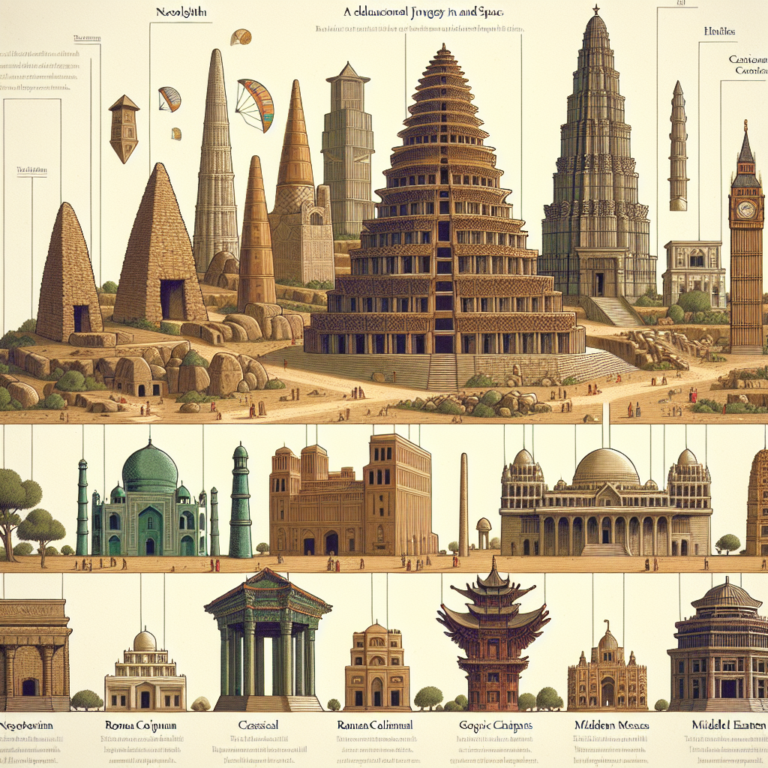Fashion Forward: A Glimpse Into World Textile And Fashion Cultures
Step into a vibrant world of colors, fabrics, and styles as you explore the fascinating realms of world textile and fashion cultures. From the intricate weavings of the Andean communities in South America to the elegant silk sarees of India, this article takes you on a captivating journey across continents, offering a glimpse into the diverse and rich tapestry of global fashion. Discover the stories behind traditional garments, the techniques passed down through generations, and the contemporary fashion movements that shape our modern society. Prepare to be inspired and amazed as you embark on this cultural exploration of fashion-forward traditions.
The Global Influence of Fashion
Fashion is a universal language that transcends cultural boundaries. It serves as a means of self-expression, a reflection of one’s identity, and a representation of a society’s values and beliefs. As the world becomes more connected through globalization, the influence of fashion has expanded beyond borders, impacting and being influenced by various cultures. From Asia to Europe, the Middle East to Africa, and the Americas to tribal communities, fashion has become an integral part of our global society.
Asia’s Rich Textile and Fashion Culture
Asia is known for its rich textile and fashion culture, with countries like Japan, India, and South Korea leading the way in unique and influential styles.
Japan’s unique fashion scene
Japan has long been recognized as a fashion capital, known for its avant-garde and cutting-edge styles. From the street fashion of Harajuku to the minimalist designs of Issey Miyake, Japanese fashion is characterized by its innovation, attention to detail, and ability to push boundaries. The country’s fashion scene not only influences the global industry but also serves as a source of inspiration for designers worldwide.
India’s colorful sarees and textiles
India’s fashion industry is deeply rooted in its rich heritage and traditional textiles. The vibrant colors, intricate embroideries, and luxurious fabrics of Indian sarees have captured the attention of fashion enthusiasts worldwide. The country’s diverse cultural influences and the craftsmanship of its artisans play a significant role in shaping Indian fashion, making it a style that truly transcends borders.
The influence of K-pop on South Korean fashion
South Korea’s Korean pop music, or K-pop, has gained immense popularity worldwide. Alongside its musical influence, K-pop has also made a significant impact on the fashion industry. K-pop stars are often seen as fashion icons, sporting bold and eclectic styles that have inspired trends globally. From oversized streetwear to gender-neutral fashion, South Korean fashion is celebrated for its creativity and fearless approach to style.
A Closer Look at European Fashion Styles
Europe has long been considered a hub of fashion and style, with countries like Italy, France, and the United Kingdom leading the way in defining European fashion.
Renaissance-inspired Italian fashion
Italy, known for its rich history and art, served as the birthplace of the Renaissance, a period of great cultural and artistic revival. Italian fashion draws inspiration from this historical era, featuring luxurious fabrics, intricate details, and a focus on craftsmanship. From the opulence of Venetian masks to the elegance of tailored suits, Italian fashion embodies a sense of timeless sophistication.
French haute couture
French fashion is synonymous with haute couture, a term used to describe high-end, made-to-measure clothing. French designers like Chanel, Dior, and Saint Laurent have shaped the fashion industry with their innovative designs and attention to detail. The French capital, Paris, is not only the fashion capital of the world but also the birthplace of couture. French fashion is characterized by its elegance, refinement, and impeccable craftsmanship.
British dapper style
The United Kingdom has a reputation for its dapper and sophisticated style, showcasing a mix of traditional and modern influences. British fashion is known for its tailoring, with iconic brands like Savile Row setting the standard for bespoke menswear. From the classic elegance of the British royal family to the avant-garde streetwear seen on the streets of London, British fashion combines heritage with contemporary trends, creating a style that is both timeless and cutting-edge.
Middle Eastern Fashion: A Blend of Tradition and Modernity
The Middle East is a region known for its rich cultural heritage and the fusion of traditional and modern influences can be seen in its fashion.
The symbolism of Arabic attire
Arabic attire, such as the abaya and the hijab, holds a deep cultural and religious significance. These garments are not only a form of modesty but also serve as a means of expressing cultural identity. The intricate embroidery, vibrant colors, and flowing silhouettes showcase the beauty and diversity of Middle Eastern fashion, reflecting the region’s history and traditions.
Modern Middle Eastern Fashion Trends
In recent years, Middle Eastern fashion has undergone a transformation, embracing modern trends while staying true to its roots. The fashion industry in cities like Dubai and Beirut has flourished, with designers creating contemporary designs that cater to the region’s cosmopolitan and affluent population. From luxury abayas to modest high fashion, Middle Eastern fashion showcases a unique blend of tradition and modernity.
The influence of Islamic culture on fashion
Islamic culture has played a significant role in shaping fashion globally. The modest fashion movement, inspired by Islamic principles of modesty and decency, has gained popularity worldwide. From modest fashion weeks to the rise of modest fashion influencers, Islamic culture has made a profound impact on the global fashion industry, promoting inclusivity and diversity.
African Textiles: Bold and Vibrant
African textiles are known for their bold colors, intricate patterns, and unique motifs, reflecting the diversity and rich cultural heritage of the continent.
African wax prints and their meaning
One of the most recognizable African textiles is the wax print fabric. Made through a wax-resist dyeing technique, these vibrant fabrics often feature intricate designs and symbols that hold cultural significance. Each pattern and color combination tells a story, representing a particular tribe, community, or occasion. African wax prints have gained global popularity, with fashion designers incorporating these fabrics into their collections, celebrating the beauty and cultural heritage of Africa.
Contemporary African fashion
Contemporary African fashion is a vibrant mix of traditional aesthetics and modern influences. African designers are showcasing their creativity and craftsmanship through innovative designs that embrace cultural heritage. From African-inspired prints to traditional techniques, such as beadwork and handwoven textiles, African fashion is gaining recognition on the global stage, highlighting the beauty and diversity of the continent.
The influence of African textiles on global fashion
African textiles have made a significant impact on the global fashion industry. The bold colors, intricate patterns, and rich cultural heritage represented in African textiles have inspired designers worldwide. African-inspired prints and motifs have become a popular trend in fashion, with high-profile brands incorporating these elements into their collections. The influence of African textiles has not only brought recognition to the continent but also helped promote cultural diversity in the fashion industry.
Fashion and Textiles in the Americas
The Americas have a rich and diverse fashion culture, with unique styles and influences found throughout the continent.
Iconic American jeans and cowboy style
American fashion is often associated with jeans and the iconic cowboy style. Denim, known for its durability and versatility, has become a staple in wardrobes around the world. From classic Levi’s to designer denim, American jeans embody a sense of ruggedness and individuality. The cowboy style, with its wide-brimmed hats, western shirts, and cowboy boots, is a symbol of American culture and has influenced the global fashion scene.
Latin America’s ‘manta’ and ‘poncho’
In Latin America, traditional textiles like the ‘manta’ and ‘poncho’ hold cultural significance. The ‘manta’ is a versatile textile used by indigenous communities in countries like Ecuador, Peru, and Bolivia. It is often intricately woven and can be worn as clothing, blankets, or used for decorative purposes. ‘Ponchos’ are another traditional garment found throughout Latin America, providing warmth and protection in colder climates. These textiles showcase the traditional craftsmanship and indigenous heritage of the region.
Indigenous fashion influences in the Americas
Indigenous communities in the Americas have a rich fashion heritage that is deeply rooted in their cultural traditions. From the colorful weavings of the Navajo Nation in the United States to the vibrant textiles of the Mayan people in Guatemala, indigenous fashion showcases a unique blend of ancient techniques and contemporary designs. Indigenous fashion has gained recognition for its craftsmanship and storytelling, providing a platform for indigenous artists to preserve their culture and share their stories with the world.
Exploring Tribal Fashion
Tribal fashion embraces the traditional clothing and unique aesthetics of tribal communities around the world.
Traditional tribal clothing
Traditional tribal clothing varies greatly depending on the region and community. From the intricate beadwork of Native American tribes to the woven textiles of African tribes, traditional tribal clothing is a testament to the skill and artistry of these communities. Each garment carries cultural significance, telling stories of heritage, rituals, and beliefs. Traditional tribal clothing not only serves as a form of self-expression but also helps preserve cultural identity.
Influence of tribal patterns on global fashion
Tribal patterns have made an impact on the global fashion industry, with the use of motifs and designs inspired by tribal aesthetics. From runway collections to streetwear, tribal patterns have become a popular trend, showcasing the beauty and diversity of tribal cultures. The incorporation of tribal patterns in fashion not only celebrates the craftsmanship and traditions of these communities but also promotes cultural appreciation and understanding.
Sustainability and tribal fashion
Tribal fashion often embodies sustainable practices, utilizing natural materials and traditional techniques. The focus on craftsmanship and the use of organic materials contribute to the longevity and sustainability of tribal fashion. As the fashion industry increasingly embraces sustainable practices, tribal fashion serves as an inspiration, reminding us of the importance of preserving traditional techniques and respecting the environment.
Fashion as a Cultural Expression
Fashion serves as a powerful form of cultural expression, allowing individuals to showcase their identity and heritage.
Fashion as a form of identity
Fashion plays a crucial role in shaping and expressing individual and cultural identity. Through clothing choices, people can communicate their beliefs, values, and affiliations. From traditional attire to modern fashion trends, fashion serves as a canvas on which individuals can express their unique identity and celebrate their cultural heritage.
Fashion’s role in cultural preservation
Fashion plays a vital role in preserving cultural heritage. Traditional garments and techniques that have been passed down through generations are kept alive by incorporating them into modern designs. By showcasing traditional textiles, patterns, and craftsmanship, fashion acts as a visual representation of cultural heritage, ensuring that ancient traditions are not forgotten.
Fashion as a form of protest
Fashion has also become a powerful tool for protest and social change. From the suffragette movements of the early 20th century to the modern-day feminist and LGBTQ+ movements, fashion has been used to challenge societal norms and express dissent. Through clothing choices and fashion statements, individuals can stand up for their beliefs and advocate for social justice.
Sustainable Fashion and Traditional Textiles
The fashion industry’s impact on the environment and traditional textile techniques has led to a growing interest in sustainable fashion.
The impact of fast fashion on traditional textiles
Fast fashion, characterized by inexpensive and quickly produced clothing, has had a detrimental impact on traditional textile techniques. The demand for cheap and mass-produced garments has led to the decline of artisanal craftsmanship and traditional weaving methods. The environmental consequences of fast fashion, including water pollution and textile waste, further highlight the need for sustainable alternatives.
Revival of traditional textile techniques
In response to the challenges posed by fast fashion, there has been a growing movement to revive traditional textile techniques. By promoting and preserving ancient methods of weaving, dyeing, and embroidery, artisans and designers are working to safeguard traditional craftsmanship. This revival not only ensures the survival of traditional techniques but also promotes sustainable practices and supports local economies.
Sustainable fashion as a new trend
Sustainable fashion has emerged as a new trend, with designers and consumers alike embracing eco-friendly practices. From using organic and recycled materials to promoting fair trade and ethical working conditions, sustainable fashion aims to minimize environmental impact and create a more conscious and responsible industry. By choosing sustainable fashion, individuals can support traditional textile techniques, reduce waste, and contribute to a more sustainable future.
The Intersection of Fashion and Travel
Fashion and travel are intertwined, with each influencing the other and offering unique experiences and perspectives.
Influence of travel on fashion trends
Travel has long been a source of inspiration for fashion designers. Experiencing different cultures, landscapes, and traditions provides designers with new ideas and influences. From the vibrant colors of Moroccan markets to the sleek minimalism of Scandinavian design, travel sparks creativity and influences fashion trends, bringing a global perspective to the industry.
Exploring the world through fashion
Fashion allows individuals to explore different cultures and embrace diversity. Through clothing choices, individuals can celebrate and appreciate the aesthetics and traditions of different regions. By incorporating elements of global fashion into their wardrobe, individuals can embark on a journey of self-expression and cultural exploration, showcasing their appreciation for the world’s rich tapestry of cultures.
Fashion tourism
Fashion tourism has gained popularity as travelers seek immersive experiences in the fashion capitals of the world. From attending fashion shows and visiting designer boutiques to exploring local markets and fashion museums, fashion tourism offers a unique perspective on a destination’s culture and style. Fashion enthusiasts can indulge their passion for style while exploring new cities and discovering the latest trends.
In conclusion, the global influence of fashion is undeniable. From traditional textiles and indigenous fashion to contemporary trends and sustainable practices, fashion serves as a powerful vehicle for cultural expression, preservation, and exploration. As our world becomes increasingly connected, fashion continues to transcend cultural boundaries, creating a tapestry of styles that celebrate our diversity and shared humanity.







